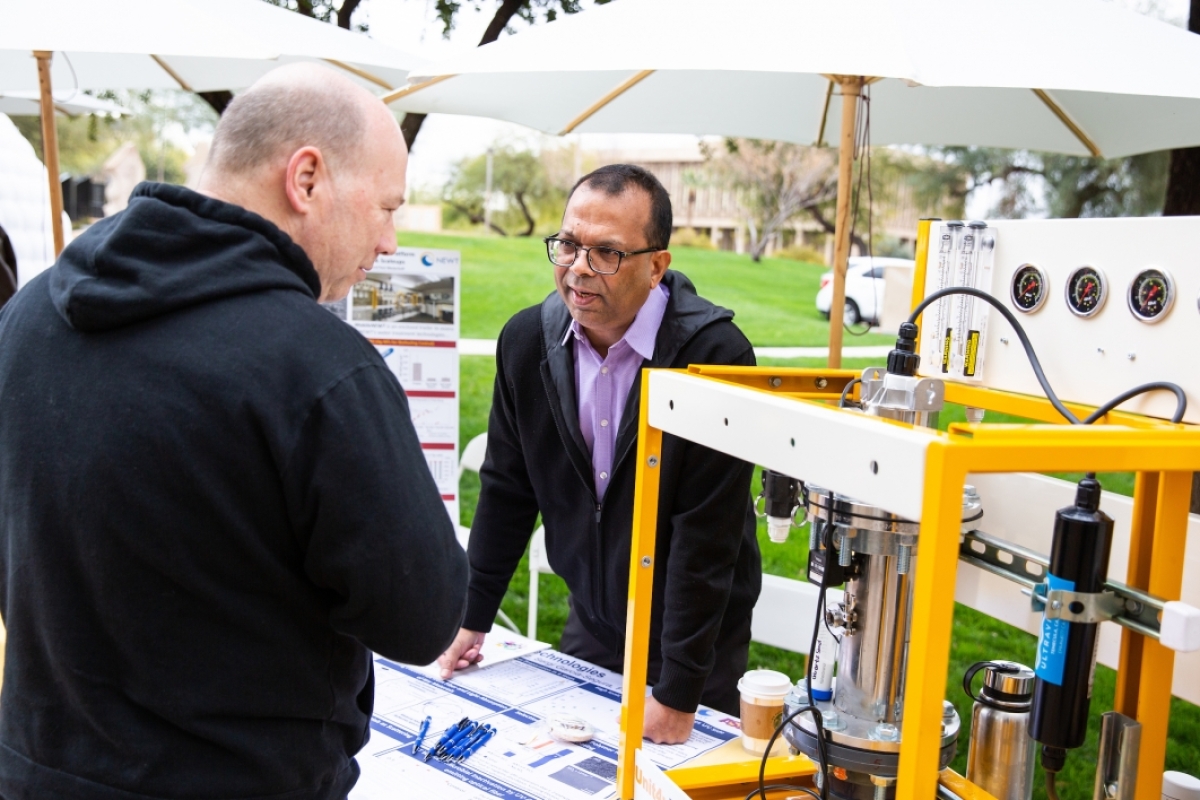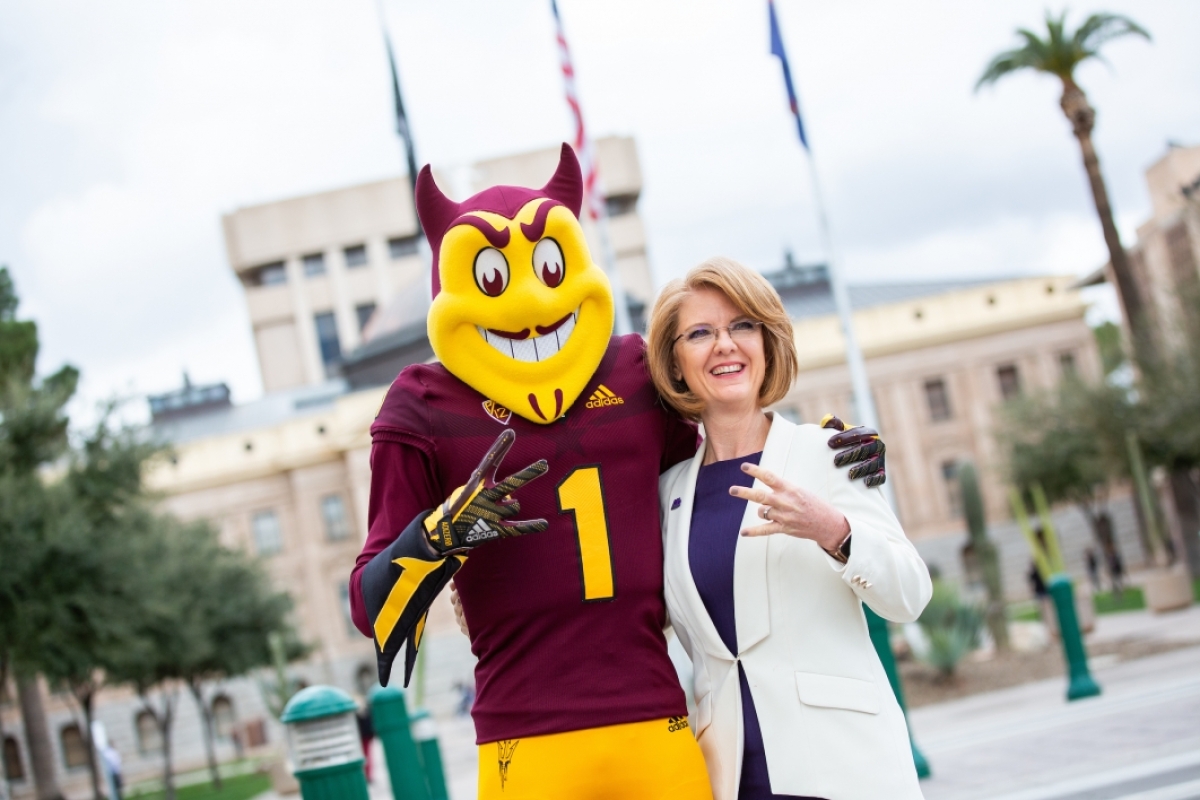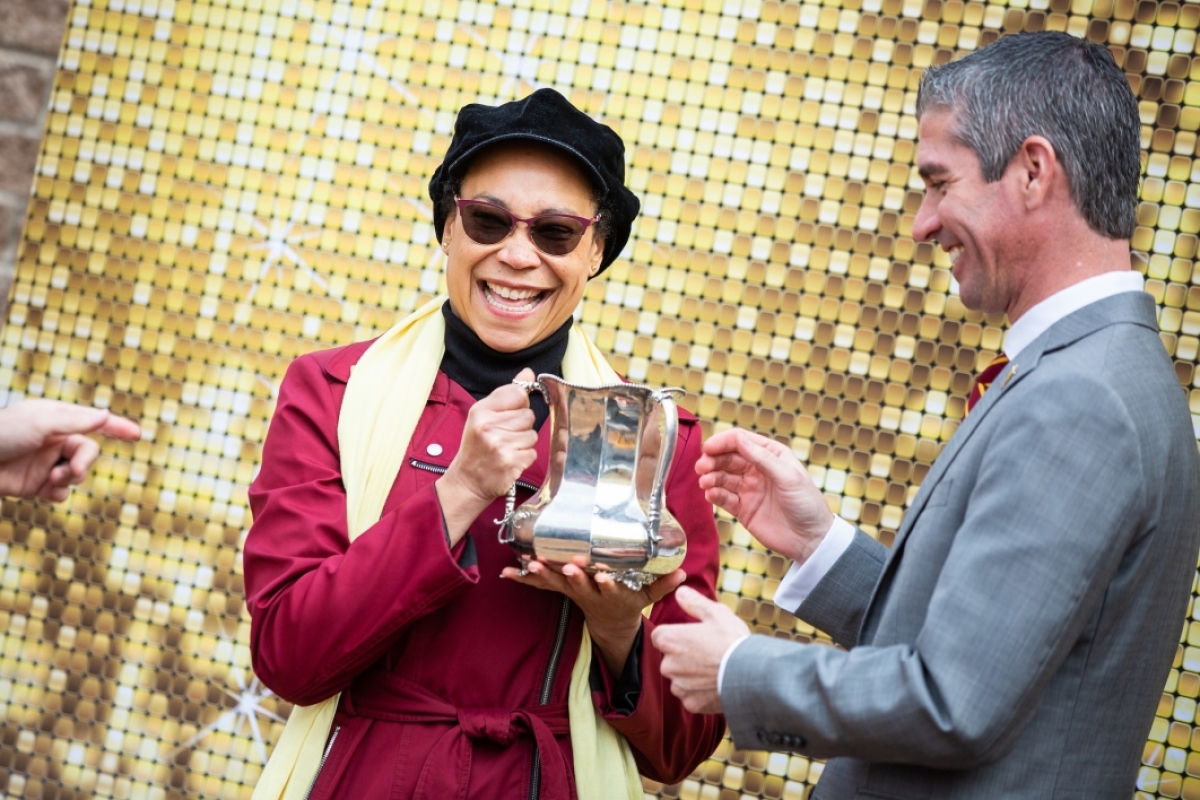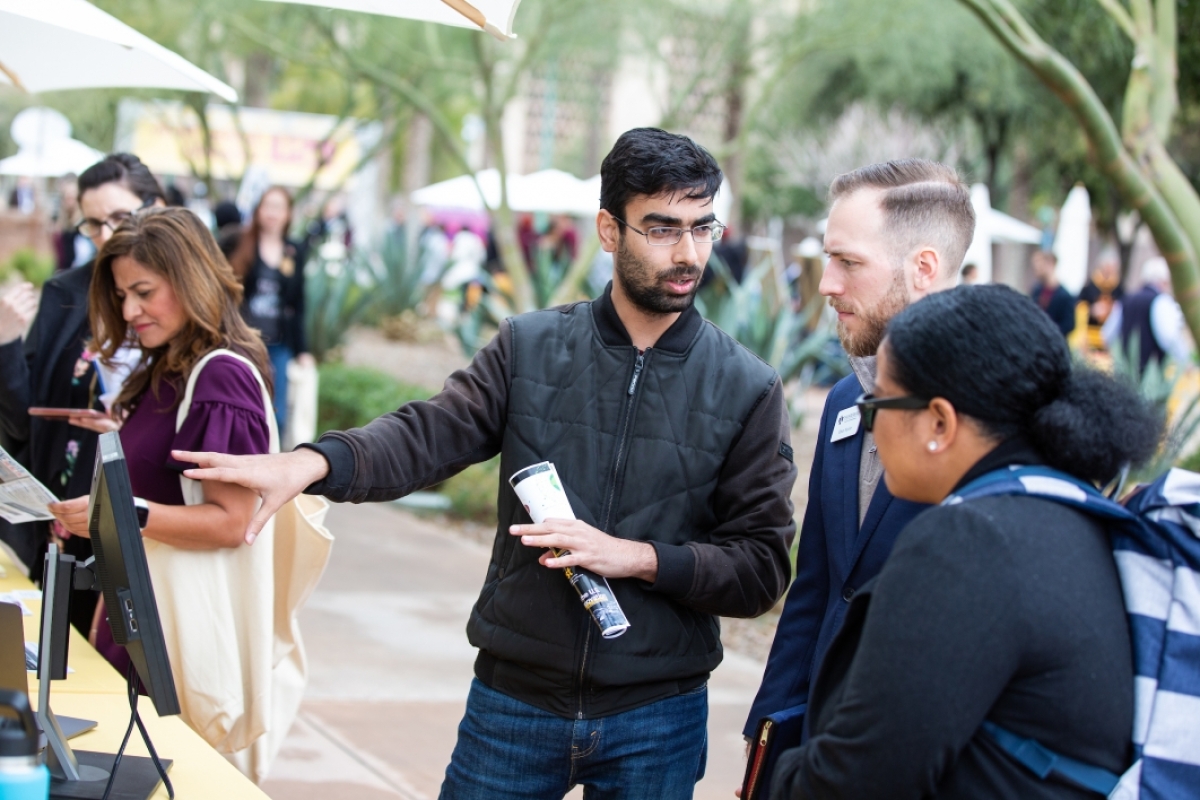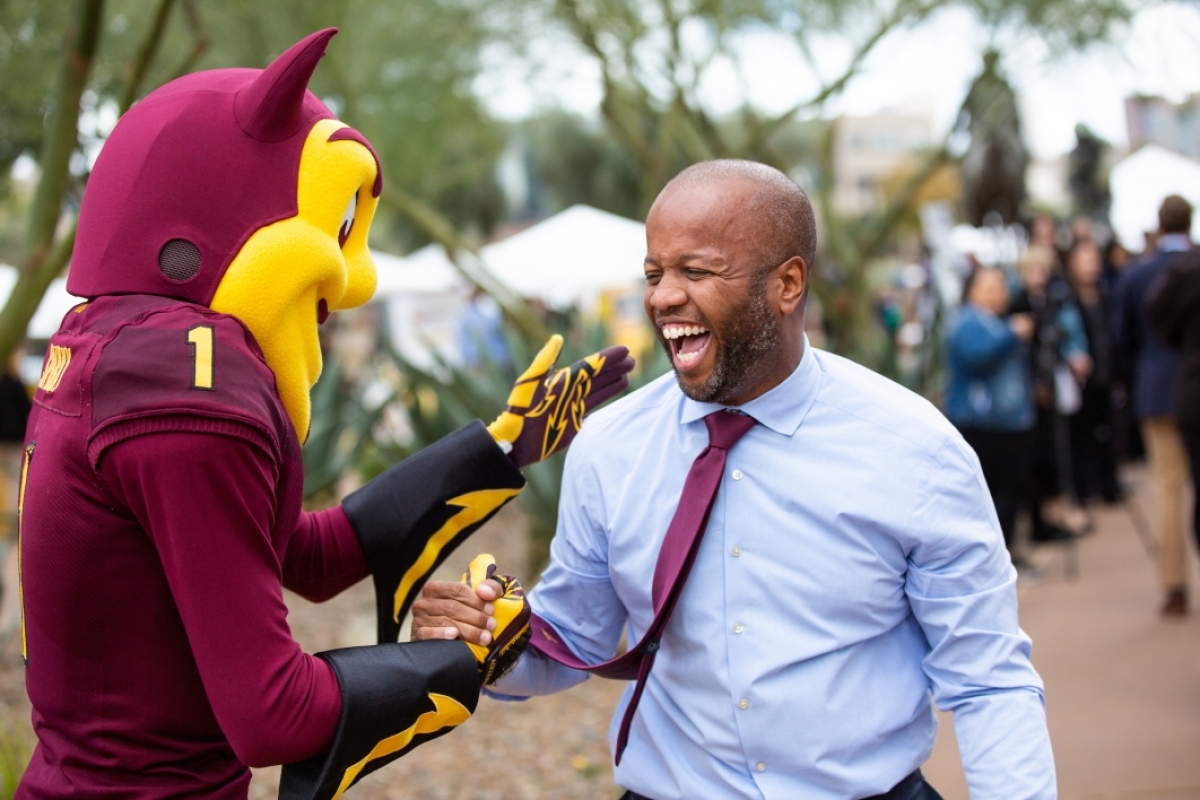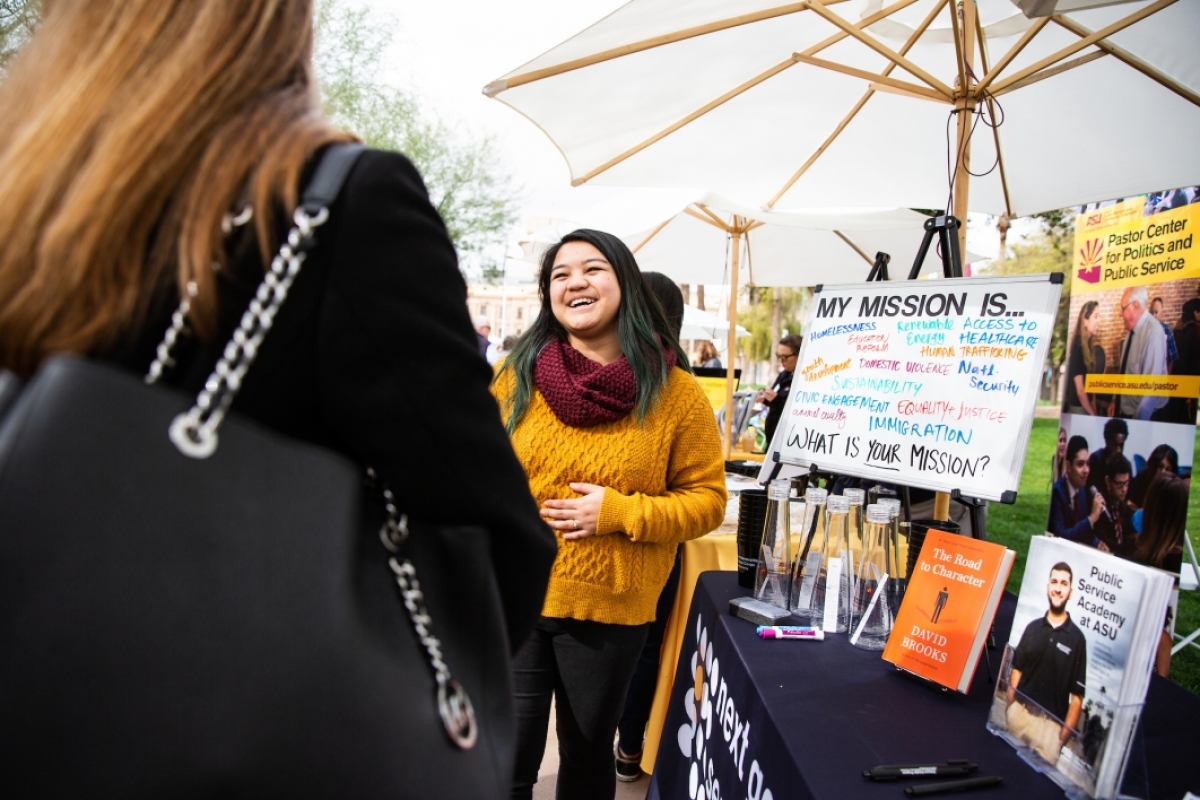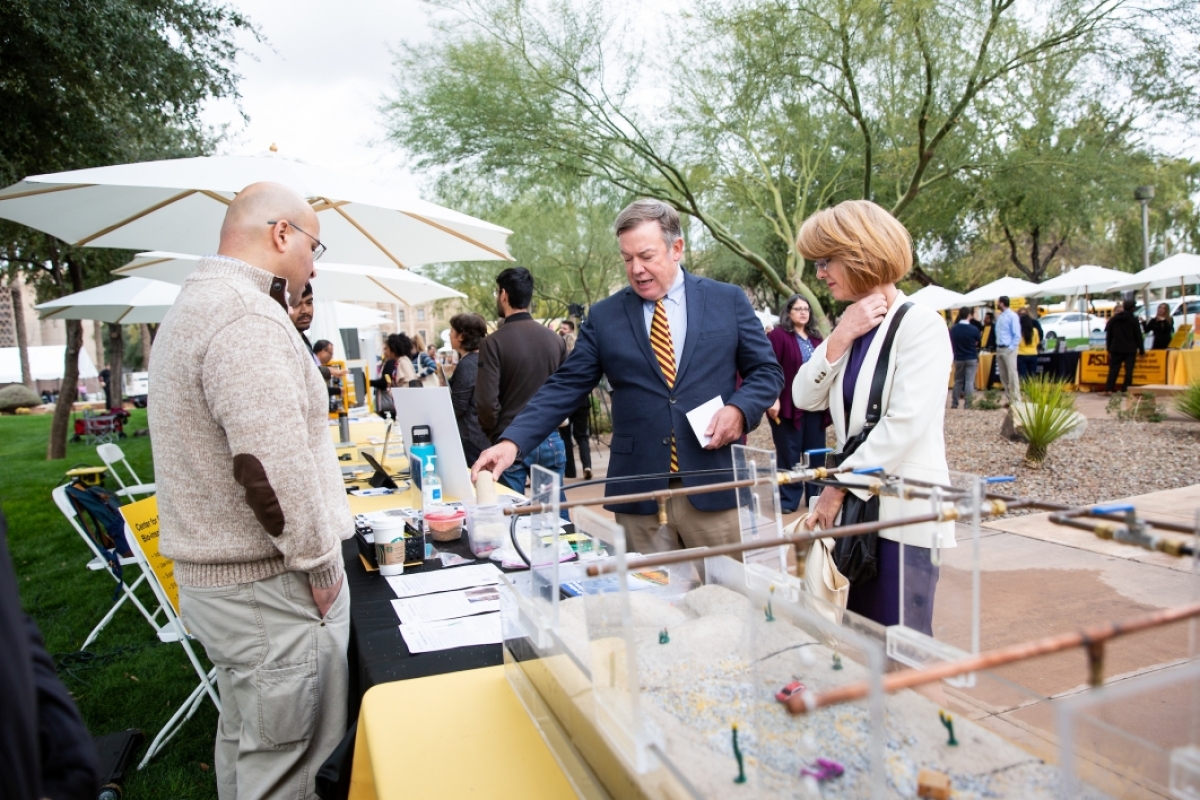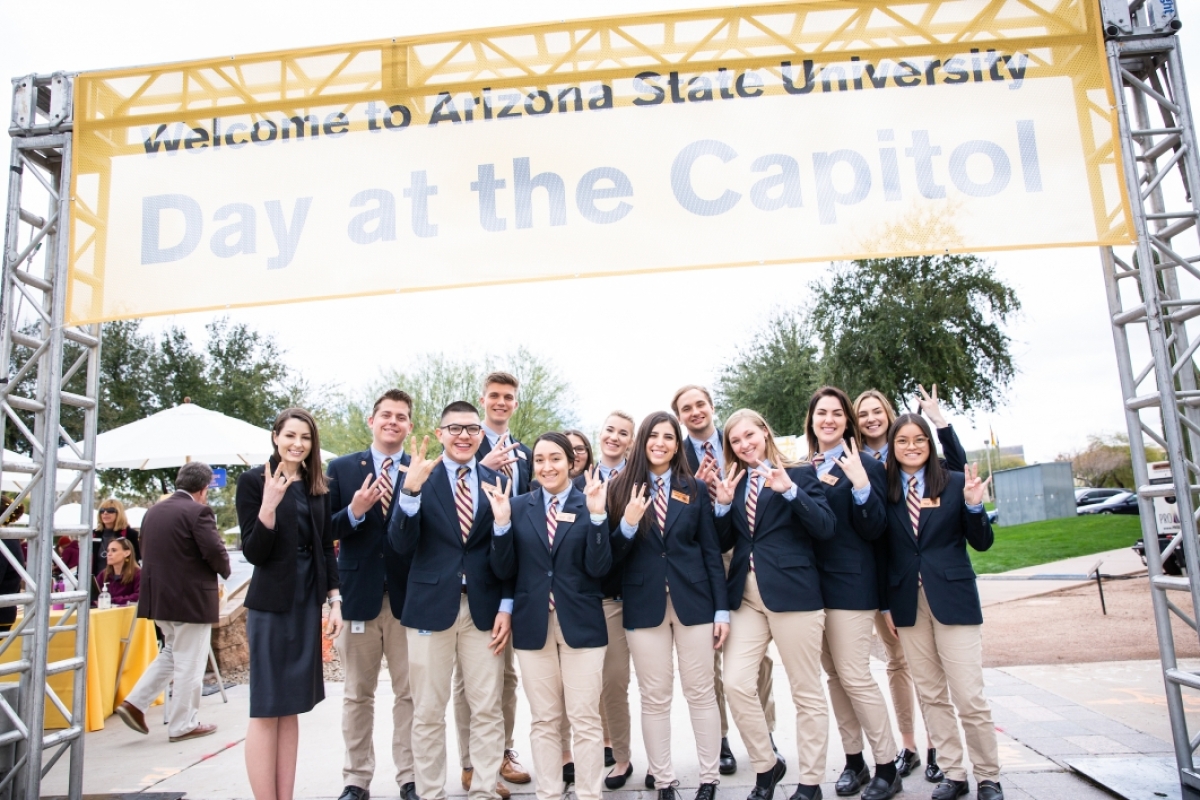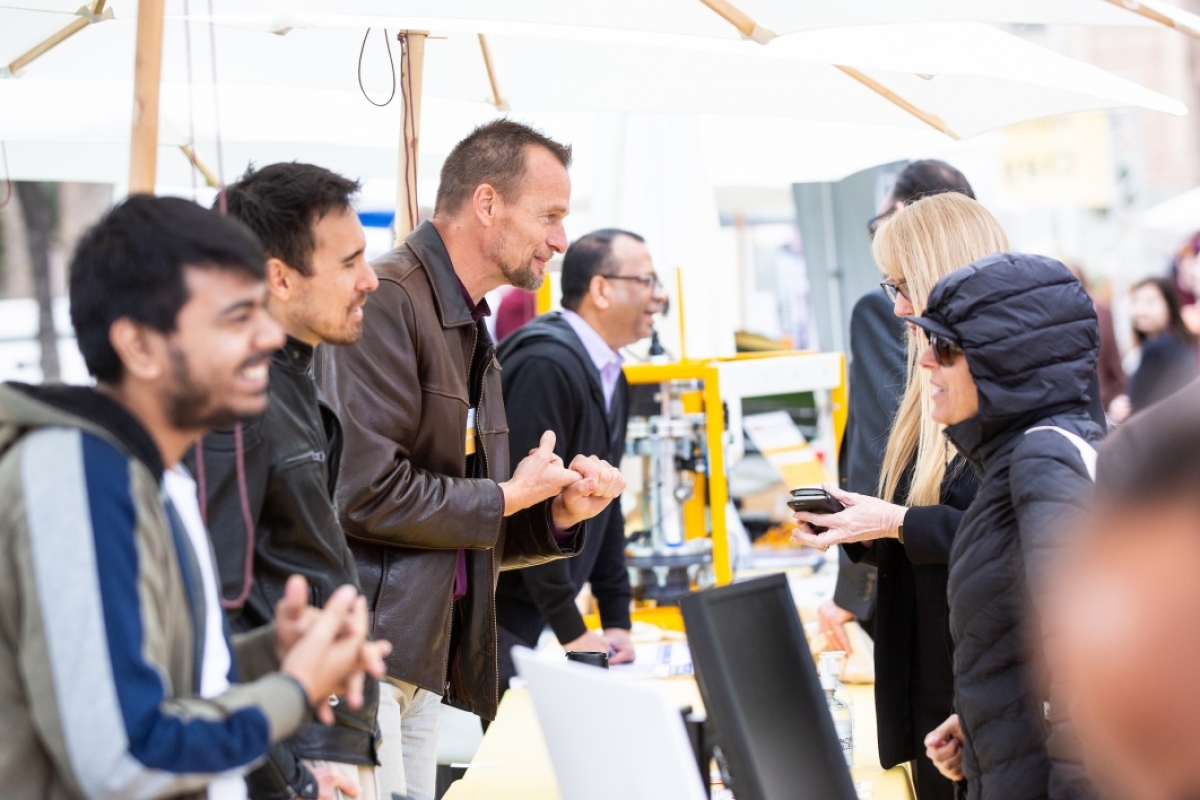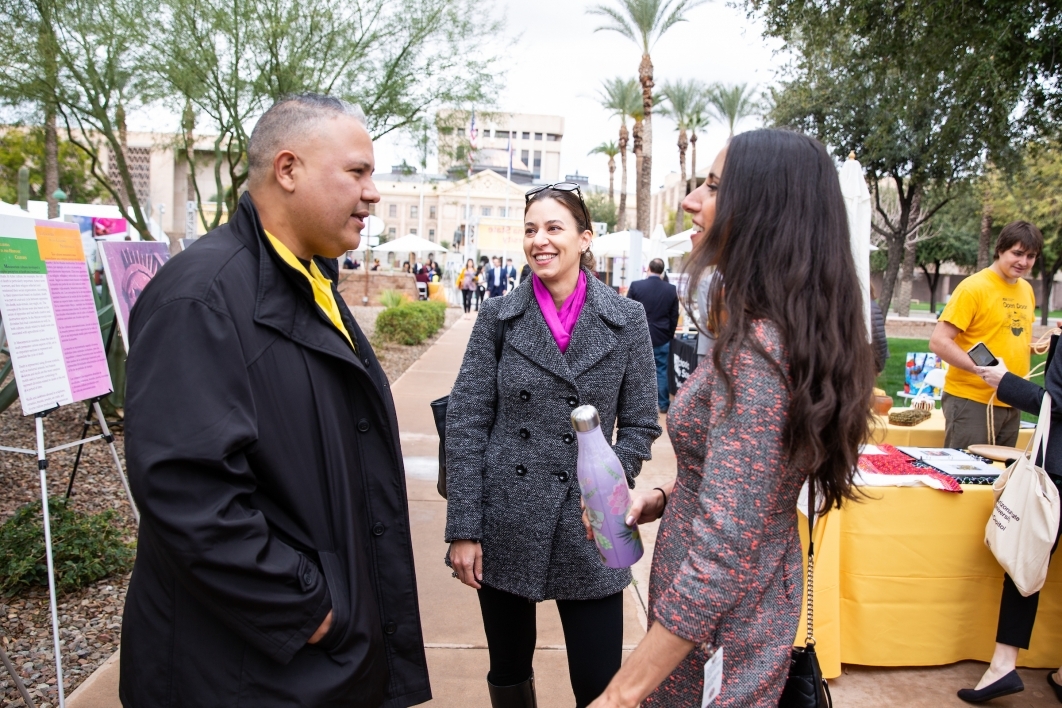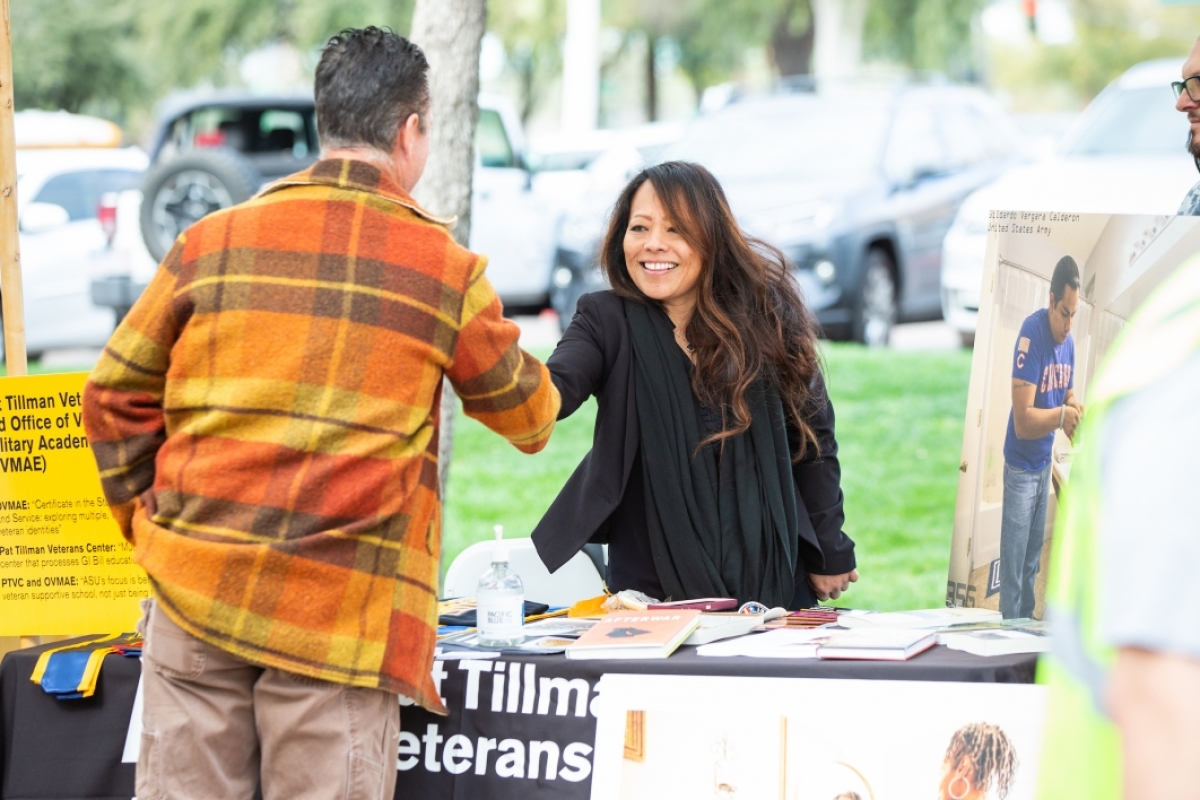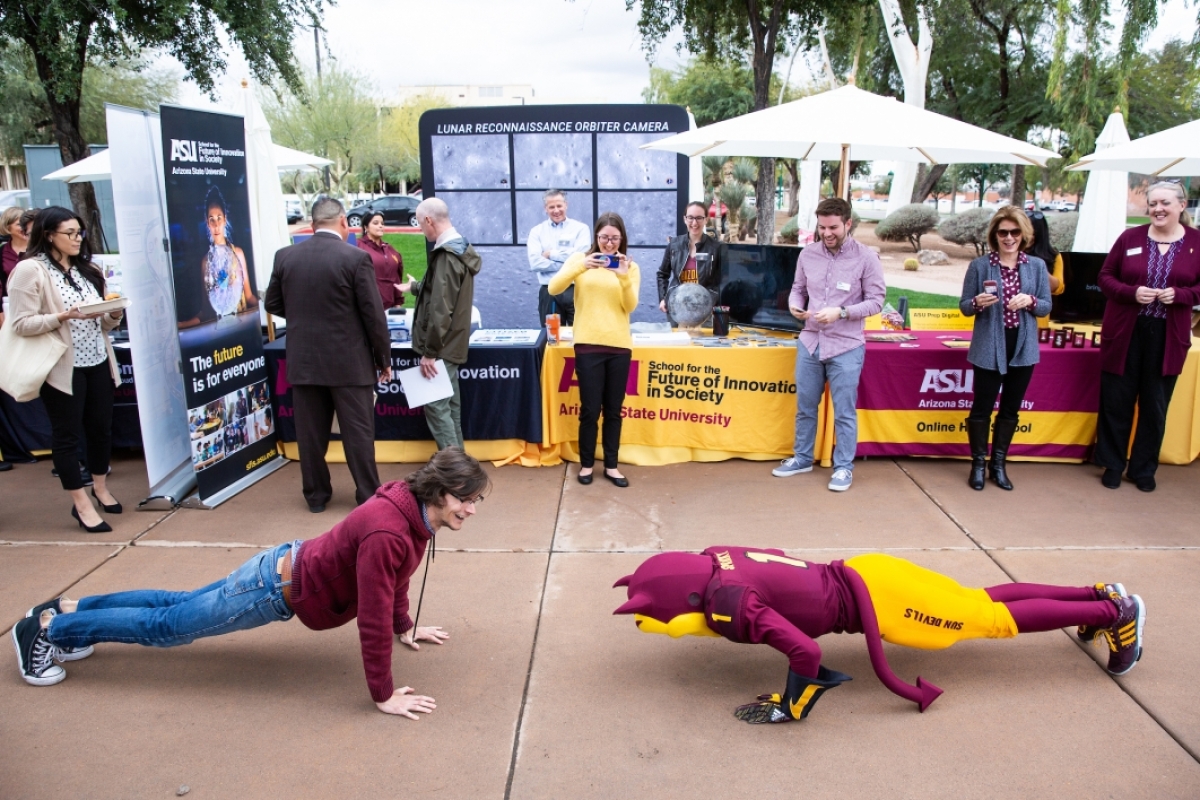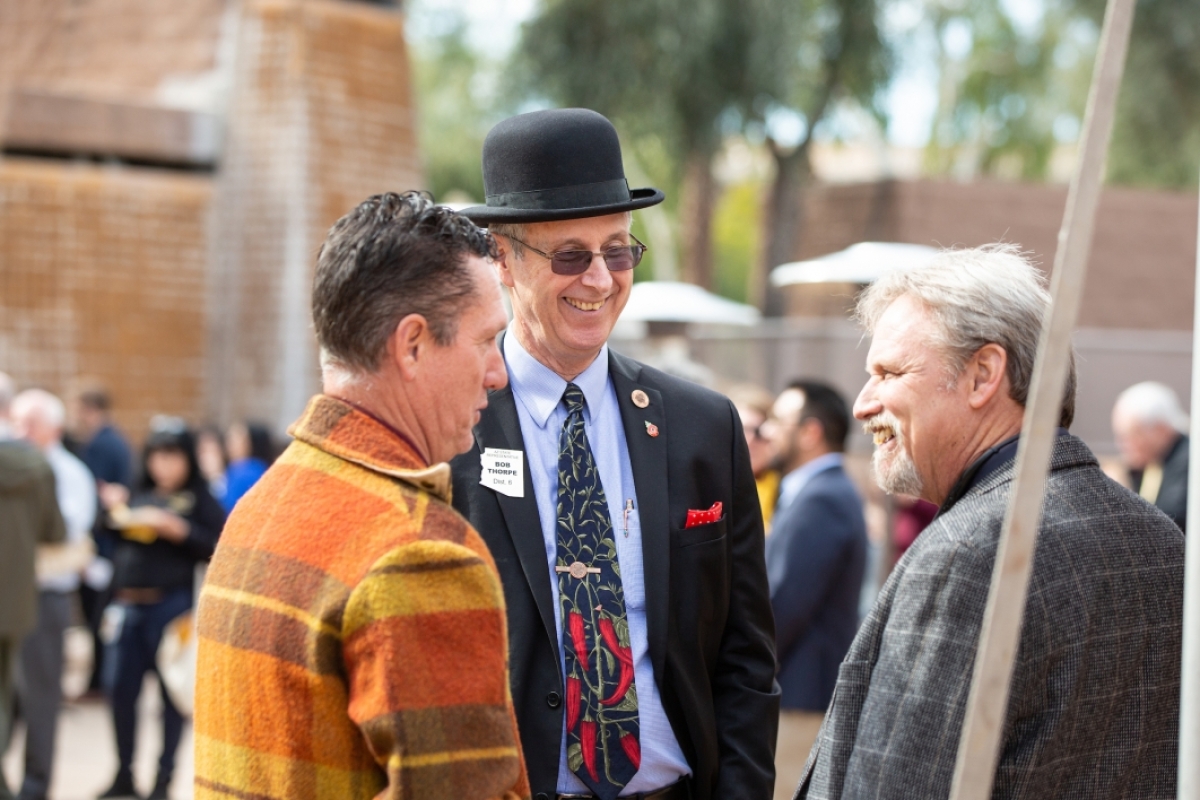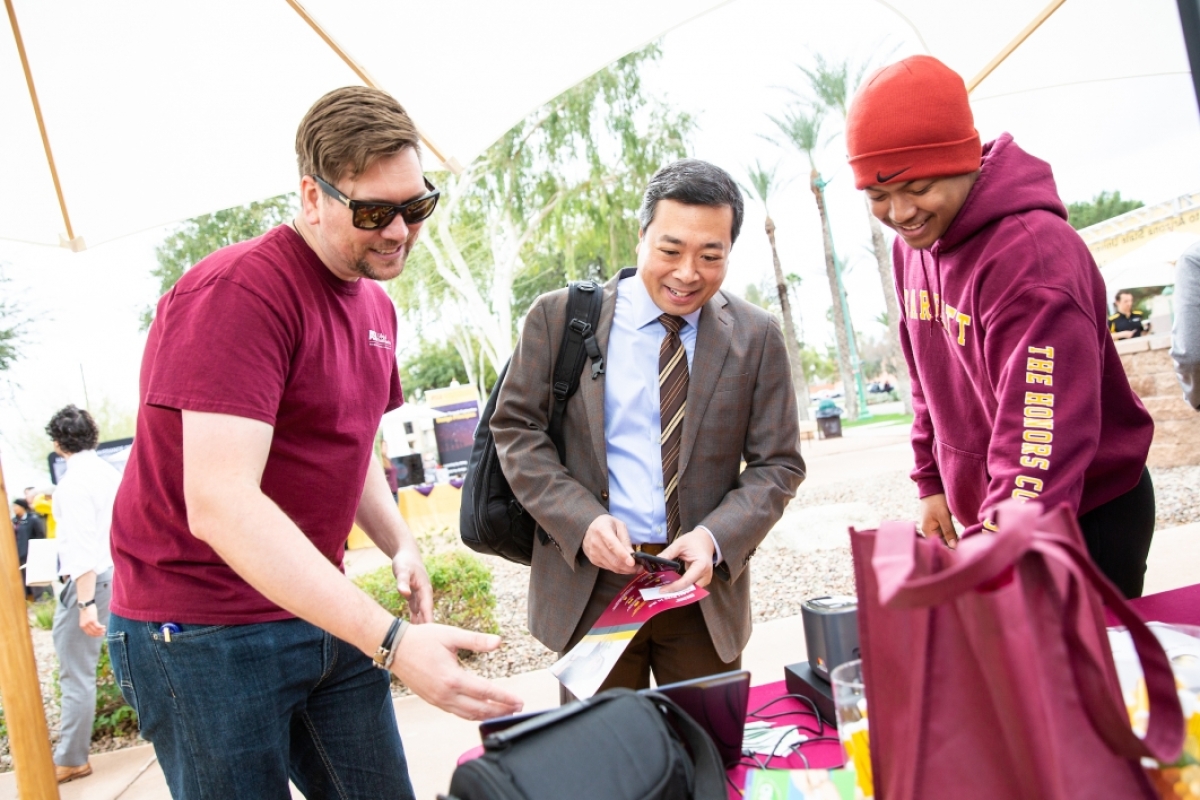Students showcase remarkable ideas at ASU's Day at the Capitol
Schools and student groups present their latest work to Arizona state legislators
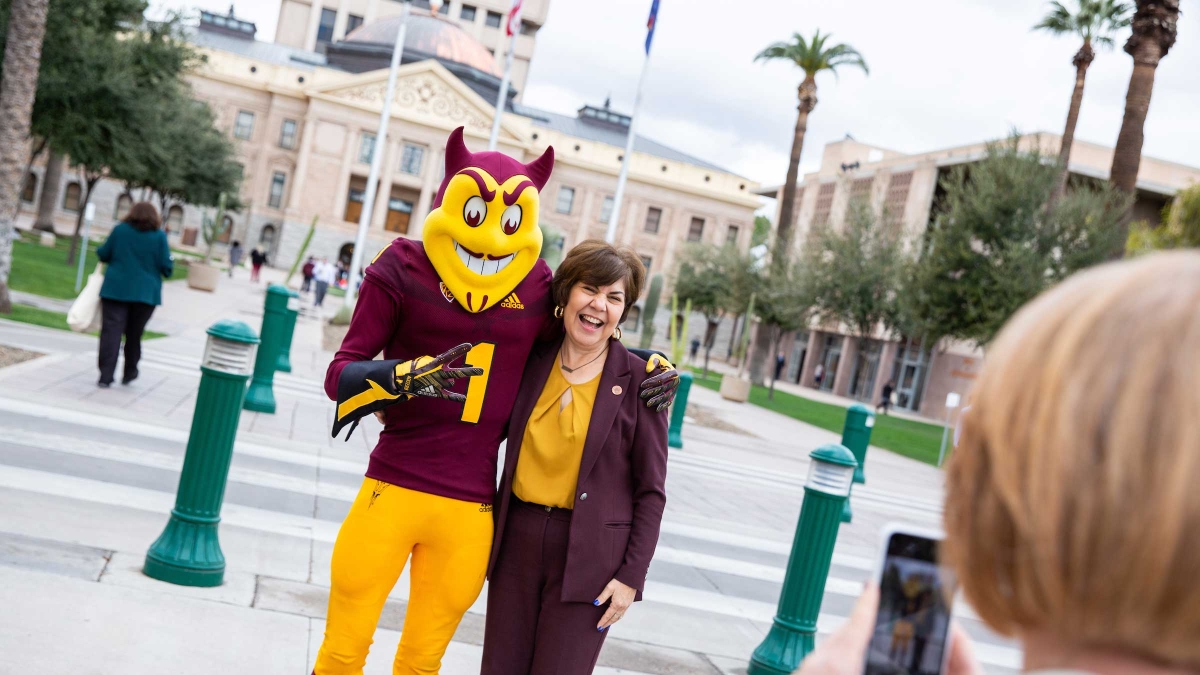
The marvels of engineering: Our world revolves around remarkable concepts and feats of design, many of which start in classrooms like the ones at Arizona State University.
During the 34th annual ASU Day at the Capitol, students from various ASU schools and colleges, including the Ira A. Fulton Schools of Engineering, showcased their work for legislators at Wesley Bolin Memorial Plaza, across from the Arizona Capitol building. The event gives students, professors and lawmakers an opportunity to connect with each other about the work being done within their districts.
“Today’s exhibits represent just a few of the ways our students and faculty put to practice their creativity in designing solutions to real-world problems that impact the world around us,” said Kyle Squires, dean of the Fulton Schools. “As a hub for engineering and technology innovation, we are working with partners in our community and throughout the state to leverage our place — to make research breakthroughs that will catalyze the tech ecosystem in the Phoenix metropolitan area, drive creation of future industries and improve the communities that we serve.”
One of those real-world solutions was created by the School of Sustainable Engineering and the Built Environment, which brought a small-scale model to the event to demonstrate the effects of rainfall, runoff and the erosion process in Arizona. The tool is used by the Flood Control District of Maricopa County for public outreach to help people understand the dangers of desert floods.
“Our No. 1 thing is flood safety,” said Chandra Miller, flood warning program specialist at the Flood Control District of Maricopa County. “What is monsoon? Why is it an issue in Arizona? It’s really important for people to understand why it’s happening, and this makes it visually easier for someone to see.”
The School of Sustainable Engineering and the Built Environment is currently working on a larger-scale model for research purposes, which will be used to evaluate engineering designs.
At ASU’s Center for Bio-mediated and Bio-inspired Geotechnics, students and researchers are using nature to come up with sustainable, biologically based solutions to challenges like dust mitigation. Researchers are using the jack bean, a nuisance plant primarily found in southeast Asia, to create a natural cement. The bean produces an enzyme that creates calcium carbonate cement. When mixed with soil and water, it bonds like glue. The center is working with three industry partners to test the water-based solution in an active landfill in Apache Junction.
It’s research like this that may lead to spinoff companies such as Aquavitas — a company that uses wastewater samples to monitor public health risks, including opioid consumption.
“We’re here to save lives,” said Adam Gushgari, CEO of Aquavitas and an ASU PhD graduate of environmental engineering. “We’re here to make lives better. We’re here to improve the quality.”
Gushgari and his professor, Rolf Halden, director of the Biodesign Institute’s Center for Environmental Health Engineering, were able to take their research and give it a broader application, offering full consultation services for municipalities and organizations.
Video by Jordan Currier and Dana Lewandowski/ASU
ASU President Michael Crow also was at the Capitol, talking with students about their work. Motivated by the Helios Rocketry exhibit, he emphasized the importance of engineering.
“How will we ever get to Star Trek? How will we ever build Starfleet Academy, unless we drive engineering faster, harder and larger in every way? That’s what we need to do at ASU,” he said.
Helios Rocketry is an ASU student-led organization that is building a 25-foot-tall, liquid-propelled rocket capable of reaching an altitude of 100 kilometers. The team will compete in the Base 11 Space Challenge in California. The deadline is late next year with a top prize of $1 million. No university team has ever taken on this challenge, but the team’s lead, Elvis Leon, realized the importance of the challenge, especially to further STEM fields.
“If ASU were to build a team and compete in the competition and win, it would be extremely amazing,” said Leon. “We’d be able to use those resources to leave behind something so that other students can have the same sort of experience and get hands-on experience to supplement their classroom education.”
MORE: Community connections will help send ASU rocket to the edge of space
There’s a growing interest in STEM fields, reflected by ASU’s fall enrollment in engineering, which totaled 23,903 — a significant increase from 16,596 in 2014. The bachelor’s degrees currently in high demand are computer science, electrical engineering and information technology. And recently, the school’s online master’s program in electrical engineering was ranked No. 1 by U.S. News and World Report.
ASU has been educating engineers for more than 60 years and now offers 25 undergraduate programs and 44 graduate programs in the six engineering schools. In 2019, engineering research expenditures topped $115 million with the bulk of the emphasis on energy, health, sustainability, education and security.
Top photo: Sparky poses for a photo with Arizona House Minority Leader and District 4 Rep. Charlene Fernandez during the annual ASU Day at the Capitol at the Wesley Bolin Memorial Plaza in Phoenix on Tuesday. Photo by Deanna Dent/ASU Now
